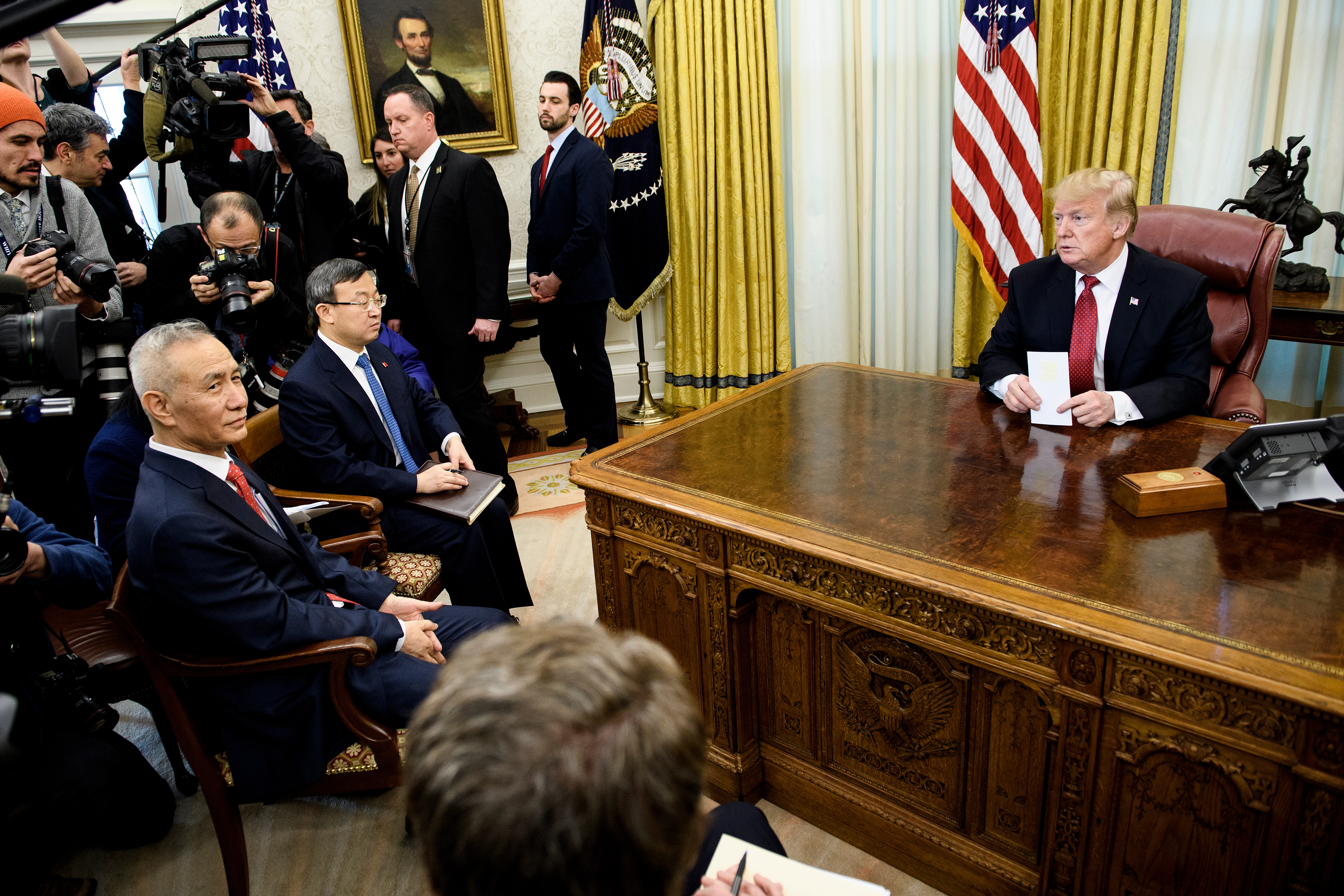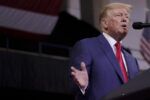Washington, Beijing all smiles on trade but doubts persist
With a tight deadline to reach a deal, analysts say only modest objectives are realistic. China’s Vice Premier Liu He talks with US President Donald Trump on January 31, 2019 (Brendan Smialowski)
Washington (AFP) – The United States and China radiated positivity after this week’s trade talks but doubts persist about the chances of sealing the overarching deal Donald Trump wants.
After two days of high-level negotiations in Washington, President Donald Trump hailed the “tremendous progress,” and the Chinese delegation said the talks had been “candid, specific and fruitful.”
Beijing also offered to increase its imports of American agricultural, energy and manufactured goods as well as US services as a gesture that it is willing to open its markets — one of the key US demands.
More important still, Trump announced he and his Chinese counterpart Xi Jinping would meet “in the near future” to bury some of the more difficult bones of contention in person.
The prospects of a Trump-Xi meeting “substantially raise the odds of a deal that gives the US at least a partial victory,” said Eswar Prasad, professor of trade policy at Cornell and China specialist.
Given the tight deadline imposed by the 90-day truce — leaving them just a month to reach a deal — analysts say it is not realistic to expect more than a partial agreement with modest objectives.
But the US side has more far reaching objectives, and demands China end its unfair trade practices, including the alleged “theft” of American technological know-how, including forced transfer of intellectual property, hacking, and massive state intervention in markets.
While Trump insisted this week he would only sign a “real deal” that addressed these grievances, Washington could bump up against the soaring ambitions Beijing laid out in its “Made in China 2025” strategic plan.
– Serious progress? –
Launched a little over three years ago, the plan aims to make the Asian giant a global leader in crucial emerging technologies like artificial intelligence and alternative-energy vehicles.
For China, meeting Washington’s demands would amount to altering its economic strategy and lessening the role of the state in the economy, something Western analysts say is unthinkable.
Beijing “has identified a whole range of industries that are strategically important and they want to use all the resources of the state to ensure that Chinese companies excel and become world leaders,” the American Chamber of Commerce in China said in a statement.
Still, some Chinese experts say Trump’s demands are not totally out of the question.
Compared with other possible demands, such as greater press and Internet freedoms and labor rights, “his list of structural reforms is only a minimal plan of action,” Wu Qian, a lecturer in political science at Tsinghua University, told AFP.
The two countries should be able to strike a bargain, or at least a preliminary agreement, he said.
But for the moment, “there is little evidence of any serious progress,” said Edward Alden, a trade policy analyst at the Washington-based Council on Foreign Relations.
Alden said US Trade Representative Robert Lighthizer faces an even trickier task as Trump has described the expected accord as “by far the largest trade deal ever made.”
The American president has set “considerably” higher expectations for Lighthizer by calling for an historic achievement, Alden said.
And by taking a central role, with a summit expected by the end of next month, Trump is likewise created a perilous situation for himself.
Should the final product fall short of his express ambitions, Trump could erode support from his political base and “there will be a tremendous negative market reaction,” Alden said.
Disclaimer: This story is published from a syndicated feed. Siliconeer does not assume any liability for the above story. Validity of the above story is for 7 Days from original date of publishing. Content copyright AFP.


